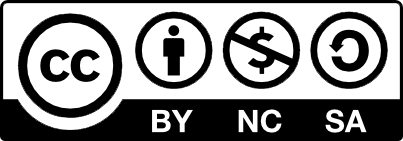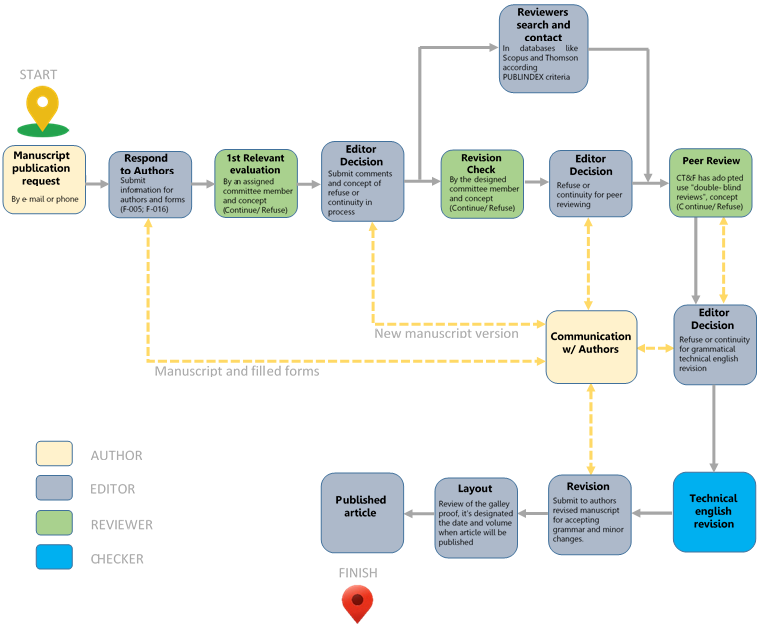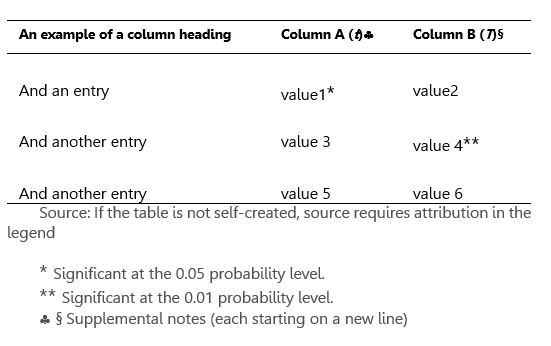Submissions
Submission Preparation Checklist
As part of the submission process, authors are required to check off their submission's compliance with all of the following items, and submissions may be returned to authors that do not adhere to these guidelines.- The submission has not been previously published, nor is it before another journal for consideration (or an explanation has been provided in Comments to the Editor).
- The submission file is in OpenOffice, Microsoft Word, or RTF document file format.
- Where available, URLs for the references have been provided.
- The text is single-spaced; uses a 12-point font; employs italics, rather than underlining (except with URL addresses); and all illustrations, figures, and tables are placed within the text at the appropriate points, rather than at the end.
- The text adheres to the stylistic and bibliographic requirements outlined in the Author Guidelines/a
- I declare that this submission complies with the CT&F Journal Statement on the Use of Artificial Intelligence (AI), disclosing its use when applicable or confirming that no AI was used.
Editorial
It is a brief note written by the editor-in-chief or by someone invited to make a description of the content of the issue.
Scientific and Technological Research Articles
Documents that present in detail the original results of research projects. Document structure generally includes four important parts: Introduction, methodology, results, and conclusions.
Review Articles
Documents that are the result of research that integrates, systemizes, analyzes and express a review on the results of published or unpublished scientific and technological research, by giving an account of the advances and development trends. These are characterized by presenting a careful bibliographical revision of at least 50 references.
ACIPET
Information about the Technical Competition of the XXI Colombian Congress of Oil, Gas and Energy.
What is it?
The technical-academic competition is the flagship event of the Congress. ACIPET aims to encourage learning, promote academic excellence and, provide a platform for students and professionals in the energy sector to demonstrate their skills in fields such as science, technology, engineering, basic sciences, as well as other disciplines. academics.
Over the years, participants compete using their knowledge and skills in specific technical and academic areas. The format chosen to carry out the contest is the presentation of technical works in two modalities: oral presentations and poster.
The Academic Technical Competition has offered the opportunity not only for students and professionals to demonstrate their skills, but also encourage teamwork, creativity and, critical thinking.
ACIPET Alliance – CT&F Science, Technology and Future
This year ACIPET and the CT&F Magazine of the Colombian Petroleum Institute (ICP) will join forces to provide validation and academic recognition to each of the academic works submitted to the Contest, and in this way:
Increase visibility and dissemination
Contribute to the advancement of knowledge in all sectors of the industry
Facilitate the fulfillment of essential requirements for advancement in the academic career of many professionals.
By completing the technical Contest with the publication of your Paper Conference in the special indexed issue of the Congress, you will be paying an important way to publish in the indexed magazine of the Colombian Petroleum Institute ICP! Participates!
Would you like more information?
Visit https://acipet.com/concurso-tecnico/ and find out about the themes of the competition, schedule, Strategic Technical Committee, abstract presentation template, instructions, and more.
Copyright Notice
We wish to certify that all authors took part in the research development and drafting of the manuscript. Likewise, the content of the article does not affect the intellectual copyrights of third parties or institutions.
Therefore we declare:
- That the imported data in the article follows the general information generated during the developed research (original), and this may be reproduced under the same experimental observations and conditions, also having documental evidence.
- That data was NOT adjusted, modified, or manipulated seeking a favorable outcome relevant to the hypothesis discussed in the article and that the results are not biased or prejudicial at the moment of its presentation.
- That the quoted references in the article are complete and verifiable.
- That there is NO text or data used without the relevant source attribution.
- That the publication carries the endorsement of and is permitted by the Institution or Responsible Centre which supports the research.
- Then the information entered in the text is the responsibility of the natural people drafting the original, that these people have conducted a detailed revision of the article, and at the same time contributing to the development of the research.
- That the main author presenting the article to the magazine accepts responsibility for including the people acting as co-authors and taking part upon the elaboration of the article, each one of them being sent with a copy of the article; they also have given their consent to be included in the article´s authorship and its publication.
- That the article is original and it has not been published before; it has NOT been priory sent to or published by any other magazines and/or by any other electronic of physical transmission means for its diffusion.
- That the article does NOT correspond to partial or fragmented information of any other published research.
- That there are NO conflicts of interest with companies, organizations, governmental entities, persons or projects, and/or products mentioned in the article. Likewise, the sources of the research’s financing are mentioned in the text, when applicable.
- that the authors of the articles assign the author's economic rights to CT&F journal and authorize the edition or any form of reproduction, adaptation, translation, distribution, publication, and commercialization of the same, whether in print, electronic media, on the Internet, or other forms and means. known or unknown.
Hence we authorized CT&F- Ciencia, Tecnología y Futuro Journal to publish the above-mentioned article on the platform "Open Access" ® under the CC-BY-NC-SA- license of Creative Commons (https://creativecommons.org/licenses/by-nc-sa/4.0/) and for this article to be revised by all commercial anti-plagiarism tools.
Privacy Statement
The names and email addresses entered in this journal site will be used exclusively for the stated purposes of this journal and will not be made available for any other purpose or to any other party.













